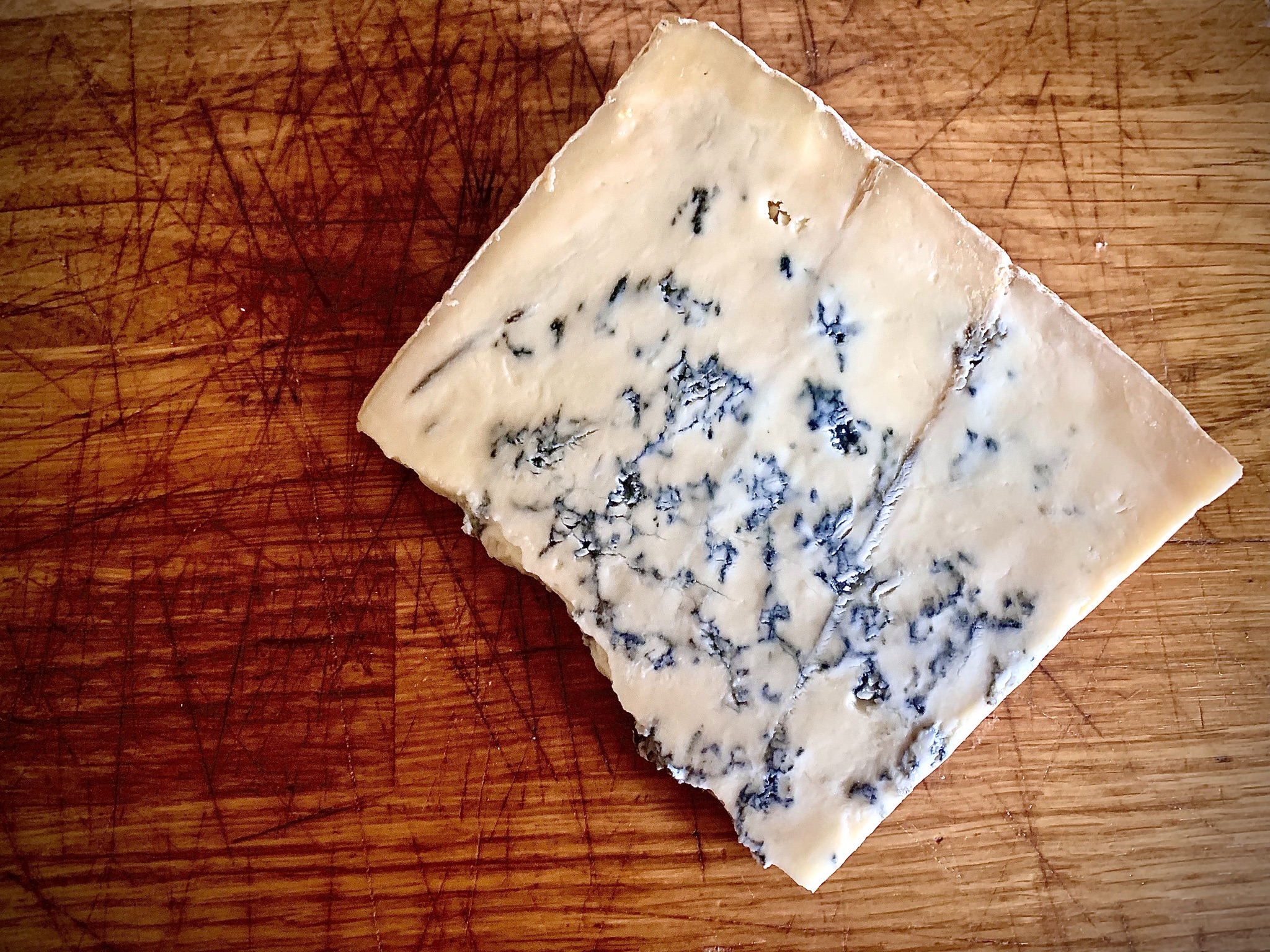Cheese of the month: Colston Bassett Stilton PDO

Often referred to as the King of British cheese, and for this cheese-loving Queen, it doesn’t get much better than a wedge of deliciously creamy and mellow Stilton. I can enjoy it at any time of year, but it takes on a starring role during the festive season.
History of Stilton
Like all of the best food discoveries, there is a famous fable that blue cheese was invented by accident. A young shepherd in Roquefort, France left his lunch of cheese and bread in a cave and forgot about it. On returning many months later, he found the mould from the cave had transferred to the cheese, turning it into Roquefort! It is that same mould, called Penicillium roqueforti, which is added during the cheese making process that gives Stilton its distinctive blue veins.
Stilton is named after a town in Cambridgeshire and initial production of the cheese originates back to the 18th century. However records from the time refer to it as a hard cheese, a bit like Parmesan. The production of the cheese then relocated to the Midlands where the recipe is thought to have changed to become more like the blue cheese that we know and love today.
Stilton gained its Protected Designation of Origin (PDO) status in 1996. This means that in order for the cheese to legally use the Stilton name it must be made using pasteurised cows’ milk and in the counties of Derbyshire, Leicestershire and Nottinghamshire. This has caused quite a stir with people in Stilton, who believe because the town is the original home of the cheese they should still be allowed to make it.
Colston Bassett Stilton PDO
Due to it’s protected status, there are only six cheesemakers that produce Stilton in the world. I recommend you try them all, but I’ve struggled to find one I prefer more than Colston Bassett.
This Stilton is made in Nottinghamshire by Colston Bassett Dairy, who have been making cheese for more than a century. They were established as a cooperative in 1913 to use up any surplus milk from local dairies. Only four people have held the post of head cheesemaker in that time. In order to make just one 7.5kg wheel of cheese, they use over 72 litres of milk, which they still source locally.
The Penicillium roqueforti mould is added to the pasteurised milk in large vats, along with a starter (which gives it acidity) and rennet (which turns the milk into curds). These curds are then ladled by hand which helps keep their structure intact and gives the cheese its creamy texture. The curds are then drained, salted and formed into wheels secured with a cheese hoop to make sure it keep it’s structure while it ages. After 4-6 weeks of ageing in maturing stores, the cheese is punctured with stainless steel needles. This allows air to enter into the cheese which activates the Penicillium roqueforti mould and helps to develop the Stilton’s blue veins.
A young Stilton will have a slight tang to its taste. As it ages, it mellows, resulting in a creamy and unctuous flavour and a melt-in-the-mouth texture. Colston Bassett Stilton is best enjoyed at around 12 weeks.
Key facts
| From | Nottinghamshire, England |
| Milk | Cow’s milk |
| Age | 8-12 weeks |
| Strength and style of cheese | Medium-strong, blue |
| Vegetarian | Yes |
| Pasteurised | Yes |
| Tasting notes | Salty, nutty, creamy, tangy, fruity, umami, mushroom |
Drinks pairing
The classic drinks pairing with Stilton is port, so a nice Tawny from Portugal would work really well. I was lucky enough to visit Taylor’s famous port cellars in Porto few years ago. The smell of the fortified wine slowly ageing in the barrels, as well as the port tasting after the tour, was a great way to get in the festive spirit! If you’re looking for a wine suggestion, you need something with a bit of body to stand up to the Stilton. A Cabernet Sauvignon or Malbec would work well here.
If you want a beer to match with Stilton, a stout or porter would be the obvious choice. We paired this with the delicious Elemental Porter, made by the Tempest Brewing Co, who are based in the Scottish Borders. This beer is brewed with locally milled oats and has delicious roasted coffee and bitter chocolate flavours.
It’s a really interesting beer, we got malty treacle notes which enhanced the salt and umami taste from the Stilton. It’s creamy, smooth and moreish. A classic pairing.

Colston Bassett Stilton 
Tempest Brewery Elemental Porter